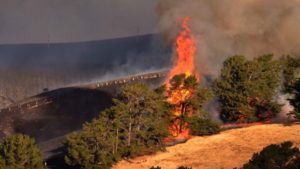Following the Port Hills fire, re-planting quickly and correctly is crucial, writes Landcare Research chief scientist Fiona Carswell.
An excerpt (read in full):

The Christchurch Port Hills fires, unlike floods and earthquakes, were essentially a human-created disaster and they will happen again. However, their scale and the risk to life and property can be mitigated.
Prior to human habitation in New Zealand, fires were relatively rare in the lowlands of the eastern South Island. Tall forests and woodlands with trees hundreds of years old grew across the plains and Banks Peninsula. These native forests were damp. They rarely caught fire via infrequent lightning.
Everything changed when humans arrived. Forests were cleared using fire and in their place matagouri, kanuka, grey scrub, bracken and tussock grasses – a huge mass of dry fuel – soon abounded. European settlers then added gorse, broom, wattles, eucalypts and pines and the ecological scene changed again.
Not only did these plants promote fire, they flourished because of it, re-sprouting after fire as few native plants do, releasing abundant seeds that thrived in the nutrient-rich ash and cleared landscape.
The loess soils and steep slopes of the Port Hills are well suited to the stress-resistant native scrub and tussock, and the fire-promoting exotics. This paints a rather grim picture of a vicious and irreversible cycle of fire and regrowth.